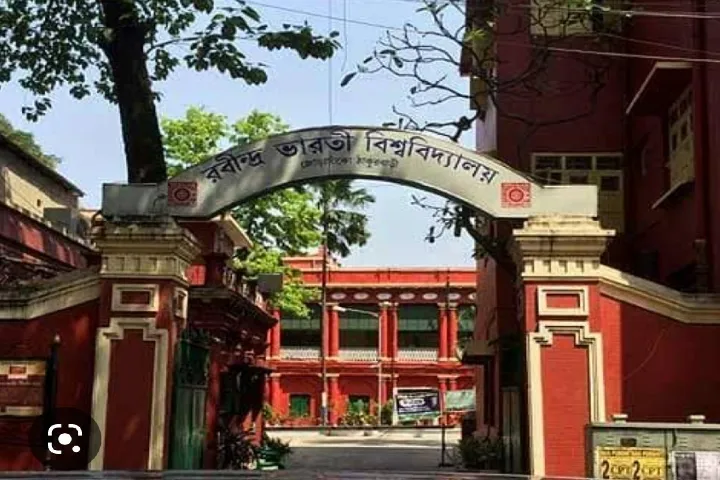

Rabindra Bharati Museum which is housed in Gurudev Rabindranath Tagore's ancestral home Jorasanko Thakurbari (Pic. Courtesy Twitter/@Ilovehyderabad)
A chance discovery at the famous Rabindra Bharati Museum housed in Jorasanko Thakurbari in Kolkata — the ancestral home of Gurudev Rabindranath Tagore — which came into being in 1962, has led to a treasure trove of many unpublished works of Abanindranath Tagore. He along with Gaganendranath were the well-known artist nephews of Gurudev Tagore and was the principal artist and creator of the Indian Society of Oriental Art. His books, “Buro Angla”, “Khirer Putul” and “Nalak” are considered landmarks in Bangla language children’s literature.
Born in 1871, he is credited as being the founder of Bengal school of art which resulted in modern Indian painting and the first major exponent of Swadeshi values in Indian art.


Among the discovered works are a small black notebook which has poetry written in it that has never been heard of before, Persian-style calligraphy and paintings that have not been displayed in public earlier. The museum staff is arranging to publish these works early next year.
The notebook has more than 30 poems, written by hand in 1886 and these are being studied by experts for more details. Dr. Baisakhi Mitra, the Museum’s curator talking to Indian Express, described it as a true discovery and said that it pushes back the timeline of Tagore’s earliest works by seven years. Interestingly, one of the verses talks about the poet’s love and reverence for India whom he treats like his mother. This sentiment is reflected in his well-known paintings of the Bharat Mata series, made in 1905 when he was 34.
Two other manuscripts found include the Agni Upasak and the Ragaragini. The former has a translated poem and six unpublished paintings which are dated 1888 thereby making them the artist’s earliest-known works. This manuscript has 120 pages and interestingly also has the poet’s impression of Thomas Moore’s poem “Translation of Fire Worshippers”. The latter includes papers that have ragas penned in Bangla in Persian-style calligraphy.
All these materials came into the possession of the Museum in the 1960s when the poet’s son, Alokendranath Tagore donated them.
Also read: Bangladesh pays tributes to Rabindranath Tagore on his death anniversary with songs and poems
Another special flight carrying 281 Indian nationals, along with three Sri Lankan and two Nepalese…
The sixteenth meeting of the India-Nepal Bilateral Consultative Group on Security Issues (INBCGSI) was held…
Finance Minister Nirmala Sitharaman on Monday lauded the resilience of Indian exporters, highlighting that the…
Israel Defence Minister Israel Katz has accused Iran of violating the ceasefire and said that…
External Affairs Minister S Jaishankar held a meeting with South Australia's Governor Frances Adamson in…
Union Minister for Communications and Development of the Northeastern Region Jyotiraditya Scindia on Tuesday highlighted…